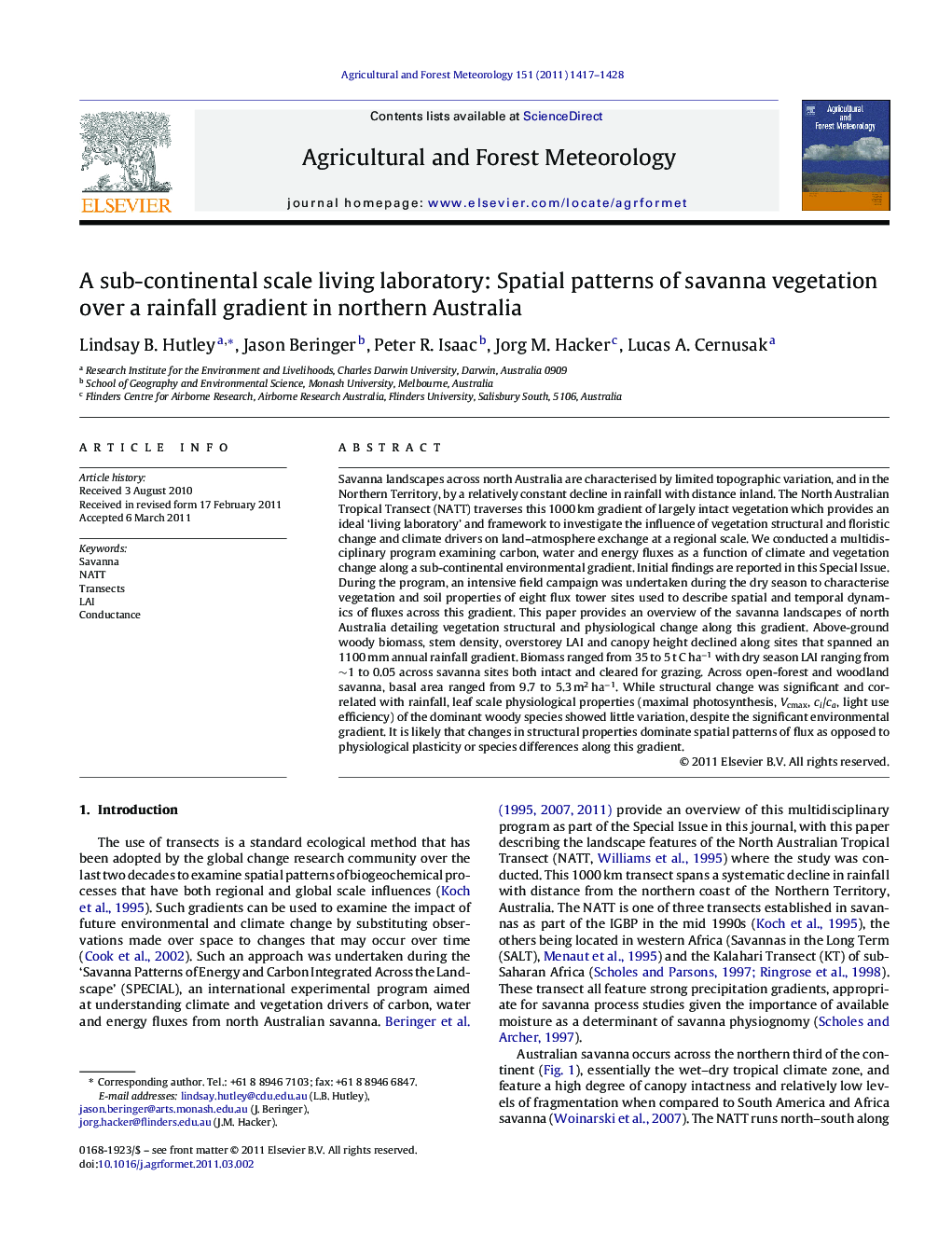| Article ID | Journal | Published Year | Pages | File Type |
|---|---|---|---|---|
| 82177 | Agricultural and Forest Meteorology | 2011 | 12 Pages |
Savanna landscapes across north Australia are characterised by limited topographic variation, and in the Northern Territory, by a relatively constant decline in rainfall with distance inland. The North Australian Tropical Transect (NATT) traverses this 1000 km gradient of largely intact vegetation which provides an ideal ‘living laboratory’ and framework to investigate the influence of vegetation structural and floristic change and climate drivers on land–atmosphere exchange at a regional scale. We conducted a multidisciplinary program examining carbon, water and energy fluxes as a function of climate and vegetation change along a sub-continental environmental gradient. Initial findings are reported in this Special Issue. During the program, an intensive field campaign was undertaken during the dry season to characterise vegetation and soil properties of eight flux tower sites used to describe spatial and temporal dynamics of fluxes across this gradient. This paper provides an overview of the savanna landscapes of north Australia detailing vegetation structural and physiological change along this gradient. Above-ground woody biomass, stem density, overstorey LAI and canopy height declined along sites that spanned an 1100 mm annual rainfall gradient. Biomass ranged from 35 to 5 t C ha−1 with dry season LAI ranging from ∼1 to 0.05 across savanna sites both intact and cleared for grazing. Across open-forest and woodland savanna, basal area ranged from 9.7 to 5.3 m2 ha−1. While structural change was significant and correlated with rainfall, leaf scale physiological properties (maximal photosynthesis, Vcmax, ci/ca, light use efficiency) of the dominant woody species showed little variation, despite the significant environmental gradient. It is likely that changes in structural properties dominate spatial patterns of flux as opposed to physiological plasticity or species differences along this gradient.
► Savanna structure and physiology was examined over an environmental gradient. ► Decline in biomass, canopy height, density and LAI with rainfall was predictable. ► Physiological properties showed little variation across the 1100 mm rainfall range. ► Changes in structural properties dominate spatial patterns of flux.
